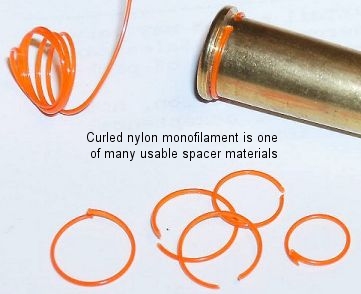To demonstrate how we can control head clearance using only the shoulder, I filed off the rim of a once-fired Remington .303 case. After adding an extractor groove to fit a Mauser-size shellholder, I neck-sized, reloaded and fired this case 19 more times.

The load was a 180-grain jacketed soft-point over a lightly-compressed charge of IMR 4350 (giving an average velocity of 2310 fps for the 19 shots and listed at just under 39,000 CUP in my IMR data booklet). The test rifle was a 1943
Lithgow
S.M.L.E. Mk.III*. 20 shots was enough for a practical test, I sectioned the case to examine the web/body junction area where thinning normally occurs.

This case, fired 19 times with no rim, has not stretched or thinned at all. I'm sure it could have continued for at least another 20 of these moderate loads.
It's clear to me that the .303's shoulder, alone without help from the normal rim, is entirely adequate to maintain "headspace" when sized in a way that preserves the shoulder location. Those handloaders who experience poor case life with neck-sized handloads should look for other factors to explain premature case failures.
















 PM
PM






